What is Stock Split and How Does It Affect Stock Prices?

7 minutes for reading
This article is dedicated to the split of stocks action, its influence on the stock price, and how attractive it is for investors
What is a stock split?
A stock split or stock divide is an action by an issuer to increase the number of stocks in circulation, which entails a decrease in the stock price but not in the general capitalisation. This is a widespread market practice, naturally supported by the company's desire to make its expensive shares more affordable to a wide range of investors.
Many of the actively developing companies are keen on the in-flow of extra money those new investors could bring. However, not every investor can afford promising and expensive stocks.
The split procedure is, therefore, a way to make stocks seem cheaper and more affordable. As a result, the number of stocks increases, and their price drops proportionally. This makes the stocks more affordable to investors.
For example, if a company increases the number of its shares five times, i.e. carries out a split of 5:1, investors can have four additional shares for each existing one in their possession.
At the same time, the price of one share decreases proportionally: if a share's initial cost was $1,000, after the split it will cost $200. This means that each shareholder of this issuer will have five times more shares, though the total share price will remain the same.
Critical points of stock splits
The split coefficient, which shows how much the number of stocks has changed after the procedure, is normally anything between 2:1 and 10:1. In the split procedure, there are three main dates:
- The day of the announcement. To get started, the company makes a public announcement of its plans for a stock split, with all the details that investors need to be aware of. This information usually includes the split coefficient and the date when the split is to happen
- Register closing day: this is an important day when the list of the company's shareholders is settled. These people will be getting extra shares after the split
- The split day is when new stocks appear on the investors' broker accounts and start trading at the new price
What is a reverse split?
Another procedure known as the reverse split changes the number of stocks in portfolios. It is also called stock consolidation.
Through this procedure, the stocks held by investors are changed by a proportionally smaller number of stocks. For example, a reverse split of 1:3 replaces every three shares owned by an investor with one single share of stock. This means that if you held 30 company shares before the reverse split went into effect, you'll only have 10 left after a stock consolidation, but the price of each share will grow three times.
For example, if the stocks traded terribly low under a dollar, a reversed split can increase their price.
How does a split affect stocks and investors?
On the whole, a stock split is interpreted as a good event for the issuing company, though it does not have a direct impact on its capitalisation. A split means that the company is developing and doing well, and this is confirmed by the growth of its shares. By carrying out a split, a company signals that it wants to make its shares more attractive and affordable to private investors.
A decrease in the price makes the shares more affordable to investors, and more liquid. The history of splits shows that, in some cases, the growth of stocks after a split can exceed the growth of major stock indices. Hence, after a split, an investor can see their portfolio increase if the shares keep growing.
The shares can demonstrate positive dynamics right after the split is announced, and even before it is over. After the split, the shares might start a temporary consolidation, sometimes lasting up to several months. First of all, this is because large institutional investors might start taking the profit upon selling the now affordable stock to individual investors.
Some famous companies (Apple, Microsoft) have had several splits over their history. However, there are such dinosaurs that reject any idea of split regardless of their extremely high stock price.
A bright example is Warren Buffett's holding company Berkshire Hathaway (NYSE: BRK.A). Its shares have never been split. Today one class A share of the company costs about $478, 025.
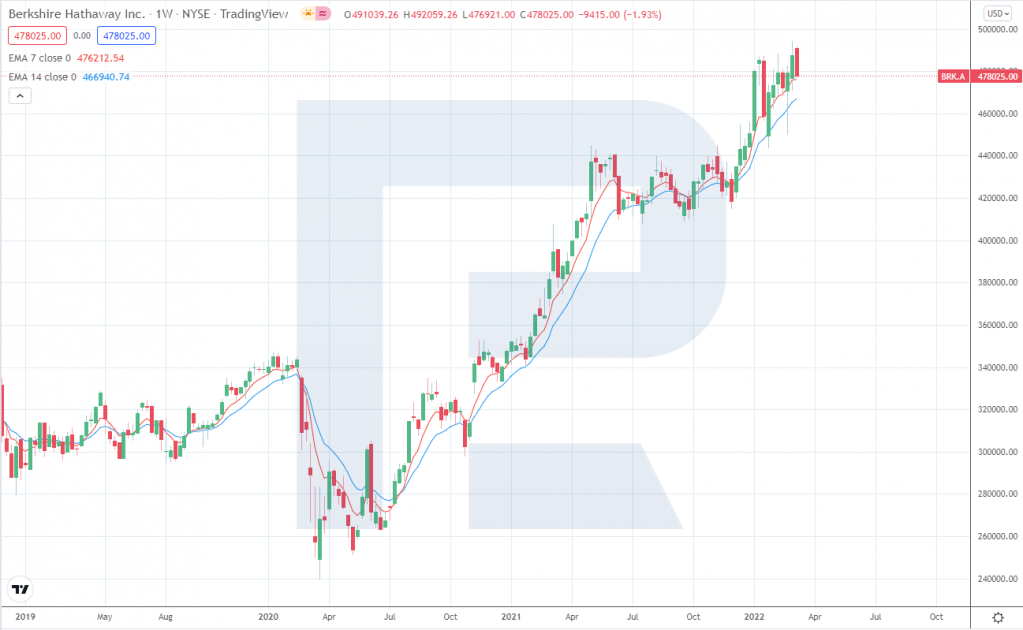
Examples of stock splits
Take a look at two stock split examples relating to two famous US companies.
Stock split of Apple
Apple (NASDAQ: AAPL) had its fifth stock split on 31 August 2020. The split coefficient was 4:1, meaning the number of shares increased four times.
After the split, the stock price was corrected from roughly $500 to $125. Later on, the price remained between $110-130 for some time, and thereafter growth continued.
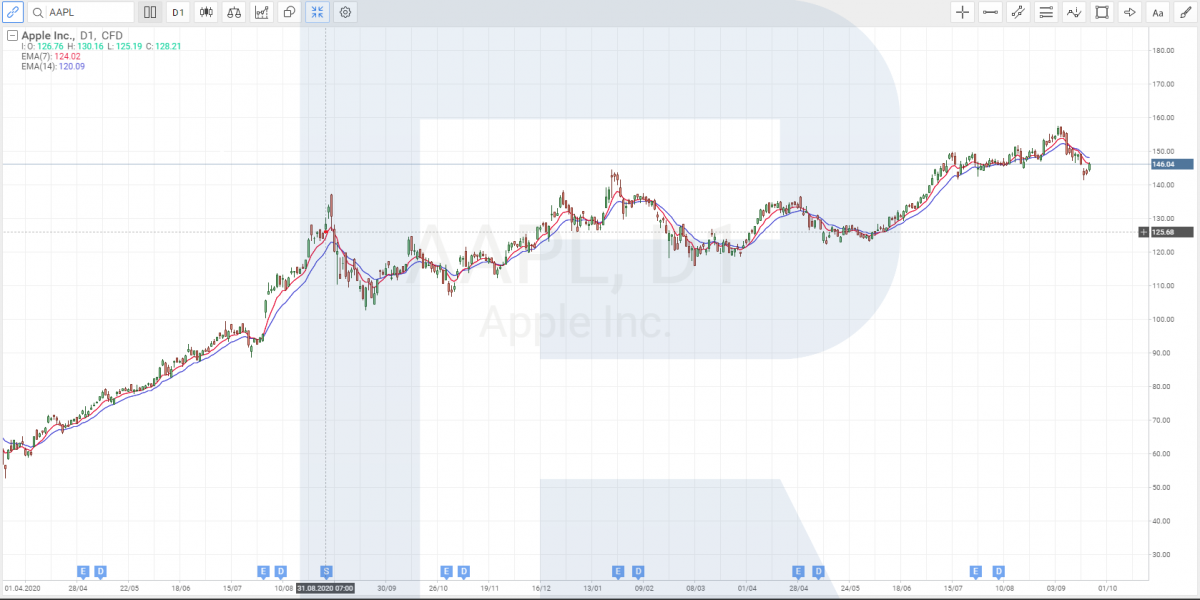
Tesla split
Elon Musk's company Tesla (NASDAQ: TSLA) carried out its first stock split on 31 August 2020 too. After a split of 5:1 was announced on 12 August, the company's shares skyrocketed almost 50% by the end of the month. After the split was over, the share price corrected from about $2,200 to $440. It kept on growing after a short consolidation.
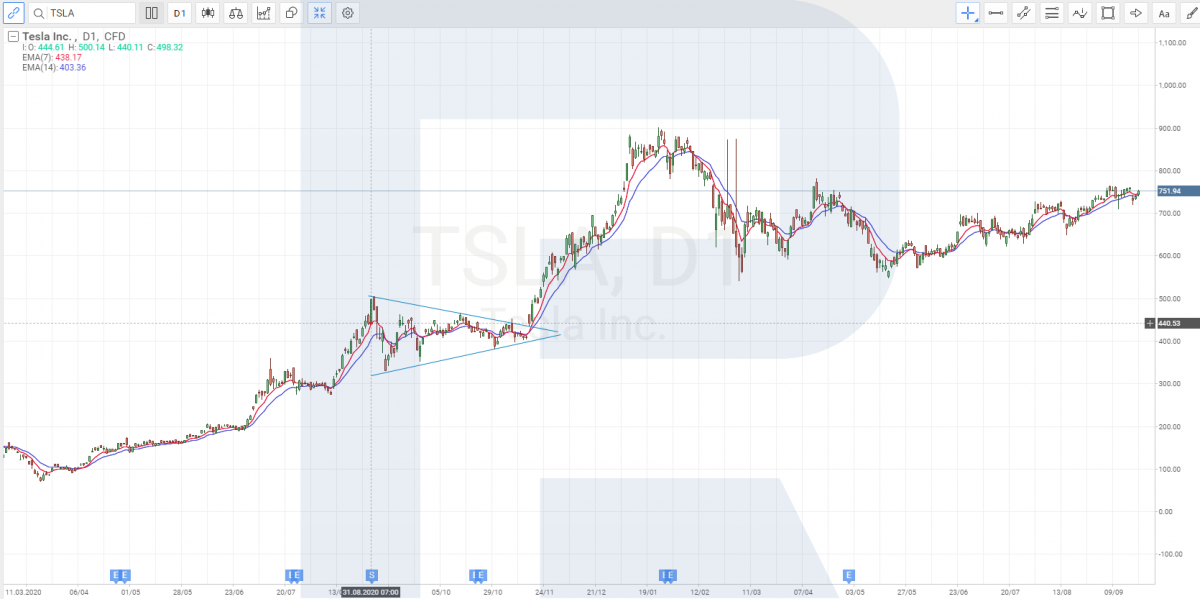
Conclusion
A stock split is a widespread way to decrease the stock price of successful and developing companies with the aim of increasing the availability of their stocks to private investors. Though it does not change the basics of the business or market capitalisation, investors can consider a stock split as another opportunity for investing.
* - Past performance does not predict future returns.
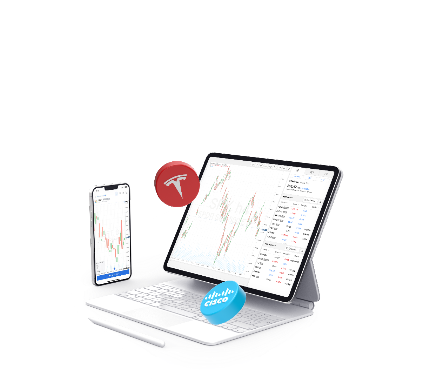
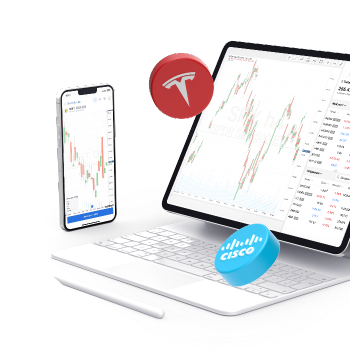
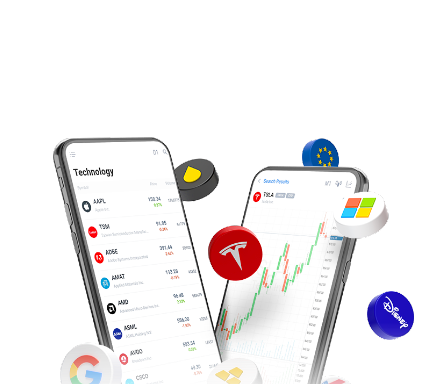


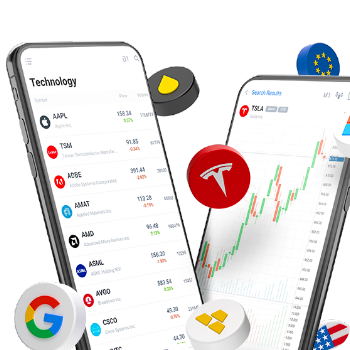








 are complex instruments and come with a high
are complex instruments and come with a high  of losing
of losing  rapidly due to
rapidly due to  . 65.68% of retail investor accounts lose
. 65.68% of retail investor accounts lose  when trading
when trading  with this provider. You should consider whether you understand how CFDs work and whether you can afford to take the high
with this provider. You should consider whether you understand how CFDs work and whether you can afford to take the high